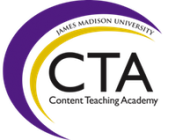Physical Education: Components of Fitness
I can identify the components of fitness and name one activity for each.
The student will correlate regular participation in physical activity with various components of fitness and improvement in fitness and skill development.
- Identify the components of health-related fitness (e.g., aerobic capacity, muscular strength and endurance, flexibility, body composition).
Lesson Notes/materials:
Materials: Pinnies, cones, laminated PE signs with elements.
